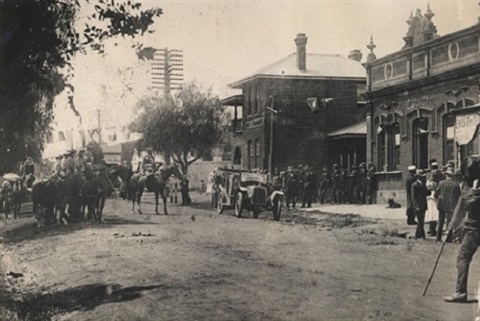Twentieth Century
Agricultural activities
At the beginning of the 20th century in the Toodyay district, agricultural activities included wheat and sheep farming, viticulture, the expansion of orchards, honey production, and timber harvesting.
In 1908, Toodyay was connected by pipeline to the Northam section of the Goldfield Water Scheme, the water flowing into newly constructed 1,000 and 10,000 gallon concrete tanks above the town reservoir.
By 1911, the population of the district was recorded at 1,001. A record drought in 1914 saw wheat production fall by 75% and sheep numbers fall similarly. World War I had begun, and between 1914 and 1918 the loss of manpower significantly affected local production.
Further accounts from the era:
Newcastle to Toodyay
By the beginning of the 20th century, the townsite of Newcastle had grown while the Toodyay townsite had diminished. Over the years, there was some confusion with the New South Wales town of the same name for mail services. In 1910, after urging from the Federal Government, a local referendum was held and Western Australia's Newcastle was renamed 'Toodyay'. The original township became known as West Toodyay.
World War I and II
The Toodyay community supported these far-off conflicts, and many young men from the district enrolled. As WWI continued, the 1916 and 1917 referendums saw the local community support conscription as a way of ensuring a fair burden on the farmer. Most Toodyay folk felt they had done their fair share towards the war effort.
In 1921, the Toodyay War Memorial was officially opened to acknowledge the sacrifice made by community members, and names were added from further conflicts in following years. After the war, agricultural production resumed, and in spite of the 1930s Depression still remained profitable.
Between 1939 and 1945, the Australian Army assumed control of Pelham Reserve and the rifle range located there. Underground chambers were built at two sites which were later described as a Mess Room, Sleeping Quarters, a Signal Office, and another office. By 1946, these sites had been decommissioned, with all the building material removed and communication trenches filled in. Today, both areas are covered by mounds of dirt and much of went on here during the war years has yet to be made known.

Photo details: Civic reception on main street Newcastle c1908